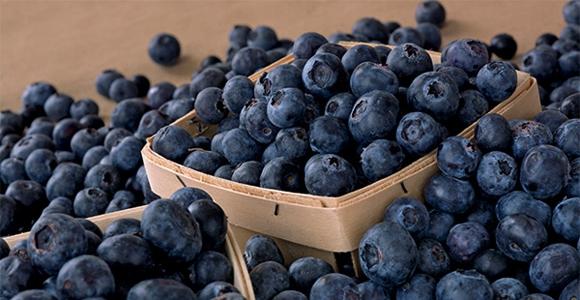Diseases caused by plant pathogenic fungi, viruses and bacteria can cause significant economic loss in commercial blueberry fields.
Blueberry diseases can be grouped into broad categories based on the type of plant pathogenic organism that causes the diseases – fungi, viruses, bacteria or nematodes – or other causal agents, such as chemical, environmental or other abiotic injury. Only a few diseases are both widespread and consistently injurious. Identifying pathogens by their signs and symptoms is a critical skill for both conventional and organic growers seeking to manage diseases.
Diseases caused by fungi
Fungal diseases of blueberry are most commonly caused by organisms that overwinter in infected or dead plant parts on or near a bush. Some examples include blueberry stem blight, stem canker, mummy berry, botrytis blossom blight, powdery mildew, rust, leaf spots and fruit rots. Some fungal diseases infect rooted cuttings and can be carried to new sites on infected planting stock. Wild, native blueberry species are often infected by endemic fungal pathogens and may serve as a source of disease, infecting nearby fields.
Diseases caused by bacteria
There are few bacterial diseases of blueberry. Some of these diseases can be quite serious. Crown gall (Agrobacterium tumefaciens) is an occasional pathogen of blueberry nursery stock. Bacterial canker (Pseudomonas syringae) causes stem dieback on the West Coast, primarily in the Pacific Northwest. Recently, a new disease called bacterial leaf scorch of blueberry has been reported in Georgia and Florida. The disease is caused by the same genus and species (Xylella fastidiosa) that causes Pierce’s disease of grape.
Diseases caused by viruses and phytoplasmas
Virus and phytoplasma diseases of blueberry vary widely. Some diseases, such as blueberry stunt, have well-known infection cycles and vector relationships, while others, such as blueberry necrotic ring blotch disorder, are newly discovered. Most viruses are managed through the use of clean planting stock from a reputable nursery and through control of the specific insects that vector (carry) the pathogen from plant to plant.
Abiotic disorders
Abiotic disorders that may be confused with disease symptoms include weather-related injuries (freeze, hail, winter injury, drought, edema), nutrient imbalances, herbicide injuries, foliar spray burns and cultivar-related problems, such as fruit cracking (rain splitting), abnormal flower structure or simply poor cultivar selection, such as growing the wrong blueberry species/cultivar for your climate and soil type.
